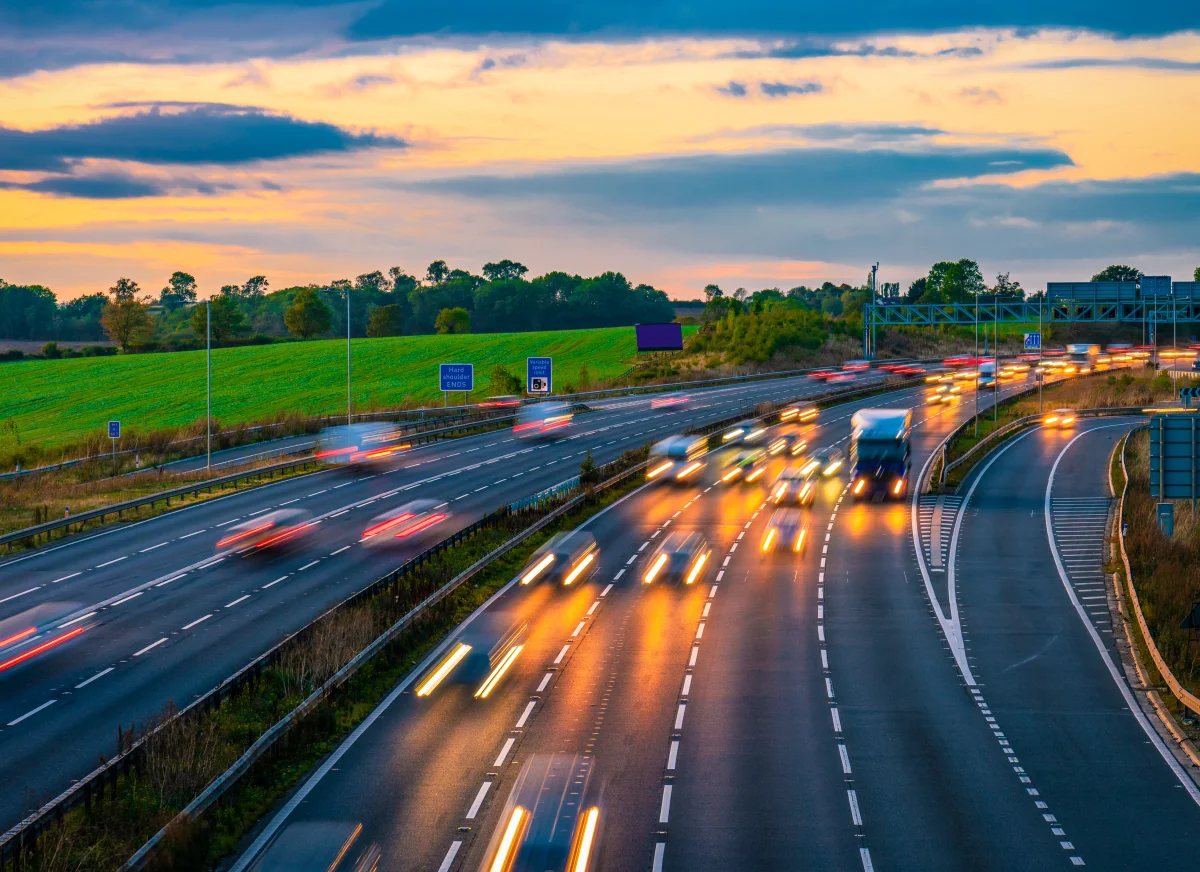The Average Speed on England’s Strategic Road Network Declined in 2024

A report published in March 2025 by National Statistics for the UK’s Government Department for Transport (DfT) – Travel time measures for the Strategic Road Network, revealed that the average speed on the Strategic Road Network* (SRN) has dropped by 2.2mph from 58.1mph in 2022 to 55.9mph in 2024 a drop of 3.8%. This is the fifth consecutive year in a row that average speed has fallen.
Even before covid, during which the average rose to 60mph due to fewer vehicles being on the road in 2020, the average speed on major roads was 58mph in 2019.
This equates to an average delay in 2024 of 11.7 seconds per vehicle per mile. Up 25.8% from 2022 when it was 9.3 seconds per vehicle per mile. The worst area for delays is greater London with 21.0s/v/m an increase of 6 seconds over 2023.
These delays are attributed to major road upgrades and maintenance projects that took place in 2024, the M26 and the A4 were impacted the most.
Although the number of vehicles on UK roads rose slightly in the 12 months of 2024, up 1.4% as at the end of Sept 2024, this is still lower than pre-covid numbers of 2019 and therefore worrying that delays are still higher than in 2019 despite there being fewer vehicles now.
With fewer vehicles on the road, and travel speeds continuing to decline, it would make sense to think that roadworks are the main causes of congestion and delays. However, a spokesperson for National Highways pointed out that the ratio of vehicles on our roads is changing, the number of Heavy Goods Vehicles (HGVs) and larger vehicles is increasing, and this brings the average speed down.
The National Statistics report highlighted the concerning trend of decreasing average speeds on all major roads in England, despite a reduction in overall traffic volume. It can be concluded that roadworks and the increased number of HGVs are both contributing to overall congestion, businesses aiming to ensure on-time deliveries, therefore, can't rely on there simply being fewer roadworks or road closures in the future.
This is where scheduling and route optimisation software comes into play.
These solutions analyse masses of data, such as recent traffic speeds on individual roads at specific times of the day and direction of travel. Matching planned road closures, and historical delays along with all the other available data route optimisation software can create the most efficient delivery routes, minimising travel times and avoiding predictable delays. Businesses can navigate these challenges and ensure their deliveries arrive on time, even in the face of unexpected delays. This translates to happier customers and improved operational efficiency.
What is the Strategic Road Network?
The Strategic Road Network (SRN) consists of all the motorways and major A roads in England, a total road system of 4,500 miles. The SRN, managed by National Highways, connects all major English towns and cities, carrying two-thirds of all freight and a third of all traffic the SRN has to cope with more than 4 million daily journeys.
Further Reading
Downloads
09/01/2024
Next-Generation Distribution, Strategies, Tactics and Technologies – Part I
Blog
08/12/2023
Streamline your delivery fleet with HGV route planning software for more efficient operations
Blog
09/12/2024
Eight ways to improve your productivity with delivery route planning software
